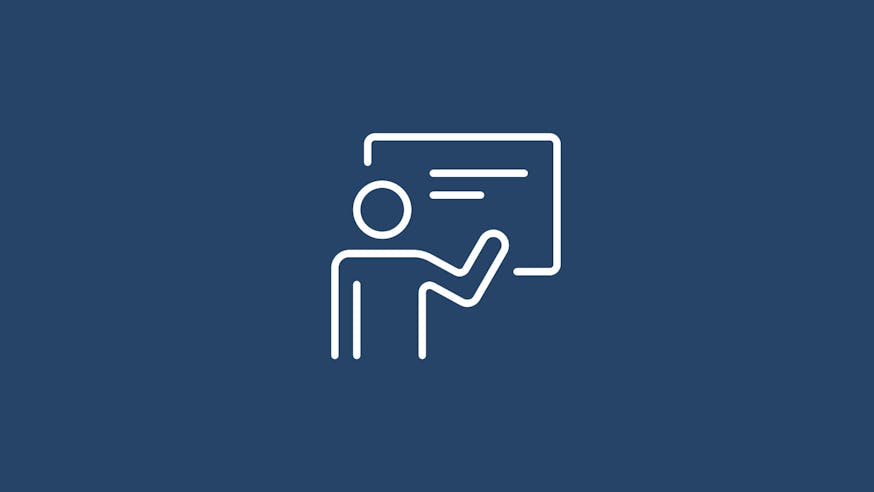Liberty Exhibit
Unit 2: Painting the Revolution
Artwork has the power to develop and even change our understanding of historical events. This unit provides opportunities for students to analyze and critique different works of art depicting the American Revolution. Using works by various artists and from the Museum’s latest exhibit, Liberty: Don Troiani’s Paintings of the Revolutionary War, students will investigate ways to analyze art for historical accuracy. Students will consider how artwork, specifically paintings, can both help and hinder us, as we learn about the Revolution and the war through an artistic lens.
Aims & Objectives
The modular activities and extensions in this unit provide opportunities for students to:
- Explore how art can be used to understand historical events.
- Examine and analyze the accuracy of art relating to the American Revolution.
- Discover the similarities and differences between the works and motives of various artists who painted the American Revolution.
- Analyze how works of art can influence one's views about historic events.
Materials
- Big Idea 2 – Painting the Revolution
- Engraving: The Bloody Massacre by Paul Revere, 1770 (Courtesy of the Dietrich American Foundation)
- Painting: Declaration of Independence by John Trumbull, 1826 (Architect of the Capitol)
- Painting: Washington Crossing the Delaware by Emanuel Leutze, 1851 (the Metropolitan Museum of Art, Gift of John Stewart Kennedy)
- Painting: The Battle of Germantown by Xavier della Gatta, 1782 (Museum of the American Revolution)
- Painting: The March to Valley Forge by William Trego, 1883 (Museum of the American Revolution)
- Painting: Victory or Death, Advance on Trenton by Don Troiani, 2014 (Courtesy of Don Troiani)
- Painting: Boston Massacre after Alonzo Chappel, 1868 (The Miriam and Ira D. Wallach Division of Art, Prints and Photographs: Picture Collection, The New York Public Library)
- Drawing: The Boston Massacre, March 5 1770 after William L. Champney, 1856 (Schomburg Center for Research in Black Culture, Photographs and Prints Division, The New York Public Library)
- Painting: The Boston Massacre, March 5, 1770 by Don Troiani, 2017 (Courtesy of Don Troiani)
- Image: “Crispus Attucks, the First Martyr of the American Revolution, King (now State) Street, Boston, March 5th, 1770” Depiction of Boston Massacre from William Cooper Nell’s book (Schomburg Center for Research in Black Culture, Photographs and Prints Division, The New York Public Library)
- Engraving: The Boston Massacre by Howard Pyle, 1883 (The Miriam and Ira D. Wallach Division of Art, Prints and Photographs: Picture Collection, The New York Public Library)
- Painting: Boston Massacre 1770, by Constantino Brumidi, 1871 (Architect of the Capitol)
- Worksheet: What Happened in Boston?
- Art card: Commissioned by You
Procedures
Engagement, Option 1 (10-15 minutes)
Art Observations
Teacher preparation: Choose one of the paintings featured in Big Idea 2: Painting the Revolution to display.
Display the painting and engage students in a discussion around the following questions:
- Based upon what you observe, list three things you might infer about the event using the painting?
- What questions does this painting raise?
- Where could you find the answers?
- If you could interview the artist, what questions would you ask him?
- Conclude by asking students if they believe using artwork is beneficial when studying history? Why or why not?
Engagement, Option 2 (15-20 minutes)
Artist, Historian or Both?
Teacher preparation: Review Big Idea 2: Painting the Revolution and print enough copies for each student to have one.
Divide students into three groups: Eyewitness Artists, Artists of the 1800s, and Modern-Day Artists. Have students create a Venn Diagram exploring the similarities and differences between the artist(s) in their time period and the practice of historians. Have each group present their findings to the class and then discuss why these diagrams look different for each group.
Development, Option 1 (20-25 minutes)
When, Where, and What is War?
Teacher preparation: Ready your technology so that you can display or project the following two images when the lesson calls for them: Nathan Hale, September 22, 1776 by Don Troiani and Battle of Guilford Courthouse by Don Troiani.
Ask students if they have ever seen a painting or image of the Revolutionary War (or, if students have not studied the American Revolution yet, then any war in general). Discuss the types of images they have seen. Ask why so many artists choose to paint scenes of battles when representing war. Are battle scenes the only way to portray a war? If not, what images would present a broader representation of war?
Next, display or project the two images. Practice close-looking skills by asking the students the following questions:
- What and/or who is the foreground, background, and middle ground of each painting?
- What is happening? What do they see that makes them say that?
- Do you believe both images portray war? Why or why not?
- What is gained or lost by having both paintings feature a large number of uniformed soldiers?
Development, Option 2 (35-45 minutes)
What Happened in Boston?
Teacher preparation: Review Big Idea 2: Painting the Revolution and print out Handout: What Happened in Boston? for each student or group. Ensure students have access to computers, tablets or other devices with working internet connections.
Distribute the worksheet What Happened in Boston? to each student or group and allow time for them to complete it. After students have completed the worksheet, engage students in a discussion around the following questions:
- How similar or different were your headlines?
- How were the messages they believe the artists were trying to convey different or similar?
- Which image do you feel most accurately portrays the real story? Why?
- What are the pros and cons of using art to understand historical events?
EXTEND: Research Project. Have students choose one of the images and artists. Have them research what actually happened in Boston and then research to what extent the artist deviated from the facts. What motivated the artist? What were his goals?
Development, Option 3 (35-40 minutes)
The Story Behind the Painting
Teacher Preparation: Review Big Idea 2: Painting the Revolution and print enough copies for each student to have one. Print out or write each of the featured artists from Big Idea 2 (Charles Willson Peale, John Trumbull, Emanuel Leutze, William Trego, Don Troiani) on separate pieces of paper and display them around the room. Obtain post-it notes for the activity.
Have students read Big Idea 2: Painting the Revolution and instruct students to think about the backgrounds and motivations of each artist. Then, hand out the post-it notes and have students write words that summarize the artist’s background and motivations for painting scenes from the Revolutionary War. Have them walk around the room and post the notes on each artist. After students complete this activity, engage in a discussion around the following questions:
- What was similar or different about the background of the artists?
- What was similar or different about the motivations of the artists?
- Do you feel knowing the background and motivations of the artist would change your understanding of their work?
EXTEND: Project works by each of the artists and ask students if knowing their background changed the way they viewed their paintings.
Culmination
Become an Art Critic Research Project
Teacher preparation: Review Big Idea 2: Painting the Revolution and print enough copies for each student to have one. Review the list of paintings below and decide whether students will pick a painting or be assigned one individually or in a group.
- The Bloody Massacre by Paul Revere
- Declaration of Independence by John Trumbull
- Washington Crossing the Delaware by Emanuel Leutze
- The Battle of Germantown by Xavier della Gatta
- The March to Valley Forge by William Trego
Share with students that paintings that depict historical events are often criticized for their inaccuracy. Have students pick a painting from the list provided below and write a review of the painting, focusing on the following:
- What historical inaccuracies can they discover?
- Using primary and secondary sources, do they feel the painting could be trusted as an authentic depiction of the historic event?
- What message is the artist trying to convey?
- What was the motivation of the artist in painting this specific scene?
- Does the painting help or hinder our understanding of the American Revolution? Can it do both?
- Are there other reasons beyond historical accuracy to value or appreciate a historical painting?
Writing and/or Discussion Prompts
- Should we hold artists accountable for historic paintings the same way we hold historians accountable for historic narratives? Or should we think of them as we do novelists, writing historically inspired fiction?
- How do we know works of art are accurate? Is it possible to know for sure?
- Is it acceptable that artists purposely glamorize events, or would you prefer for them to be depicted as realistically as possible?
“I want to document the great scenes of American history for the privilege of living here. It is something I can leave behind as a teaching tool.” - Don Troiani - What does he mean by this statement? How can art be used as a teaching tool?
Extensions & Adaptations
Ten Crucial Days, Many Different Interpretations
Teacher preparation: Display or project Victory or Death, Advance on Trenton by Don Troiani and Washington Crossing the Delaware by Emaneul Leutze.
Discuss with students the similarities and differences between the images. Ask them why they feel Don Troiani painted the event from a different perspective.
EXTEND: Have students find other interpretations depicting George Washington crossing the Delaware River and the Battles of Trenton and Princeton. Encourage students to look at paintings by the following artists, as well as sculptures and monuments of these events.
- Thomas Sully
- George Calbe Bingham
- Grant Wood
- Jacob Lawrence
- Roger Shimomura
Art as an Influencer
Have students research how military or political leaders in the 20th and 21st centuries used art as a way to glorify their image, or enhance their perceived power or importance.
Gallery Walk-Through
Assign students (or have them pick) one of the following artists that were not featured in the Big Idea 2 and have them create a presentation on their work depicting the Revolutionary War. Then have them pick their favorite painting from the artist to display in a gallery walk-through.
- Alonzo Chappel (1828-1887)
- Howard Pyle (1853-1911)
- NC Wyeth (1882-1945)
- Hugh Charles-McBarron, Jr. (1902-1992)
- Jacob Lawrence (1917-2000)
- Gerry Embleton (b. 1941)
- Mort Küntzler (b.1931)
Troiani's Inspiration
Have students research the French artist Edouard Detaille and why they think he was an inspiration to Don Troiani. What similarities can you see in their works?
Visual Biographies
Charles Willson Peale’s paintings of George Washington have been used as a visual biography of his life. Create a visual biography of your life or of someone you admire using only paintings and/or photographs. How is a visual biography different from a written one?
EXTEND: Have students choose five of Peale’s portraits of George Washington to create a visual biography of Washington.
Eyewitness Accounts
Peale and Trumbull actively served in Washington’s army, so they were able to recreate events that they personally participated in. Discuss with students if this means Peale and Trumbull’s work is more accurate.
Patriotic Paintings
Discuss with students what it means to be patriotic. Is it important for artwork depicting wars to be patriotic? Why might people hold different beliefs on this or have different answers to these questions?
Commissioned by You
Teacher preparation: Review and/or print the provided art card. Print out enough copies for each student or display the image: Battle of Germantown by Xavier della Gatta. If you are displaying the image, read the back of the included art card to students.
The Museum of the American Revolution owns two paintings by Italian artist Xavier della Gatta which were commissioned by a wealthy Irish soldier who fought in the Revolutionary War named Richard St. George. In 1776, St. George joined the British Army and crossed the Atlantic to quell the rebellion. He battled with George Washington’s army around New York and Philadelphia, and at the battles of Brandywine, Germantown, and Paoli. He saw firsthand the brutality of war. In fact, St. George was wounded in the head at the Battle of Germantown, the pain from which would plague him for the rest of his life.
Before St. George arrived in the colonies, he was already a published cartoonist. As a soldier, he drew sketches of his experiences fighting in the war. They may have helped him process his experiences. After being wounded, St. George travelled to Italy in the 1780s in search of a warmer climate to relieve the pain he continued to feel from his injury. In Naples, he met artist Xavier della Gatta and worked with him to capture the drama of the battles of Paoli and Germantown in two paintings. In one interesting detail, St. George had himself included in the Germantown painting, showing the moment when he was carried off the battlefield.
After the students have heard or read the painting’s contextual information, ask the following questions:
- Why do you feel St. George commissioned the paintings?
- What event in your life would you pay an artist to commemorate?
Revolutionary Reproductions
Many of the paintings of the American Revolution have been reproduced in various formats, including flags, stamps, and in comic books. Assign students one of the following paintings and ask them to find reproductions of it:
- Declaration of Independence by John Trumbull
- Washington Crossing the Delaware by Emanuel Leutze
- The March to Valley Forge by William Trego
Learn More

Liberty Exhibit Teacher Resources

Liberty Exhibit Big Ideas
